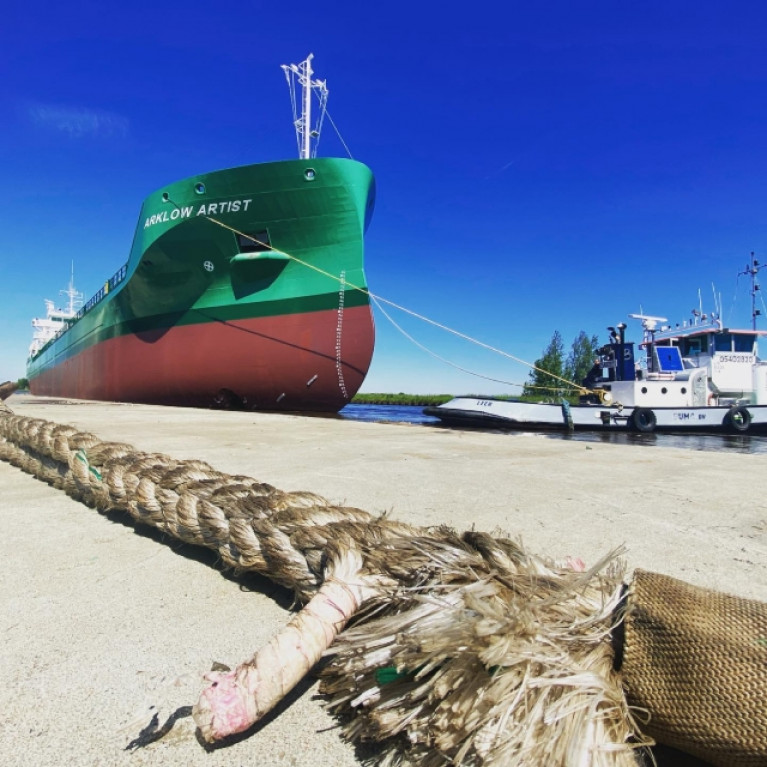Displaying items by tag: Newest Cargoship
Arklow Gem became the newest cargoship for Irish shipowners when launched this morning at a Dutch shipyard where the public were also invited to view the event, writes Jehan Ashmore.
The leadship is the first of five 'G' class newbuilds for Arklow Shipping Ltd.
With a shipyard newbuild number (Nb. 454) Arklow Gem at 10.00hrs slid off the stocks at the Ferus Smit shipyard in Westerbroek.
This involved the newbuild make a launch transversely into the adjacent canal, the Winschoterdiep.
A cargo carrying capacity is over 5000 deadweight tons and the ship has a single hold that has a maximized volume of 220.000cft
A 1,600 kW MaK engine will propel the vessel that has a single ducted propeller.
As part of the routine ship building to delivery process, the Arklow Gem will be towed to Delfzijl. From there the newbuild will head into the Ems Estuary and head to Emshaven.
The port will act as a base to carry out shipbuilder seas trials on the North Sea before the Arklow Gem is handed over to the Irish shipowner.
A new cargoship Arklow Artist, the sixth and final of the 'A' class series built at a shipyard in The Netherlands was recently delivered to Co. Wicklow shipowners, writes Jehan Ashmore.
As the video shows the bulk-orientated general cargsoship's transit along the River Ems canal from the inland yard at Westerbroek to Delfzijl.
It was in the nearby north-east Dutch port of Emshaven on the North Sea where shipyard Ferus Smit handed over the Irish flagged newbuild to Arklow Shipping Ltd.
This latest ship series using the nomenclature prefix of 'A' for ASL all began with leadship Arklow Abbey launched in 2019. Whereas a trio of the series named Arklow Accord, Ace and Archer were delivered last year. Leaving the penultimate newbuild, Arklow Arrow launched in December but did not enter service until earlier this year.
Aided by tugs stern and aft, the 8,543 (dwat) Arklow Artist made the transit from the shipyard to Delfzijl, the base for sea trials that took place in the southern North Sea.
The video also depicts a typical Dutch setting of a commercial canal barge passing Arklow Artist against the backdrop of an agricultural scene of a farmstead in the lowlands nation.
At the end of the footage, as Arklow Artist approaches the canal which splits into two, the newbuild veers into the canal on the right so to enter Delfzijl with its background of wind turbines dominating the horizon.
























































